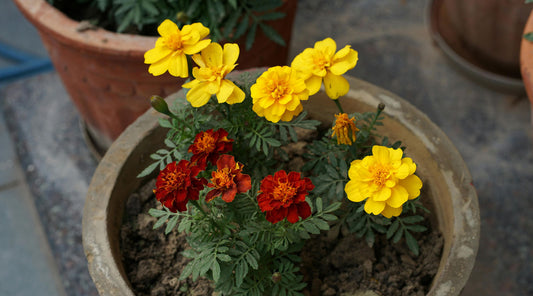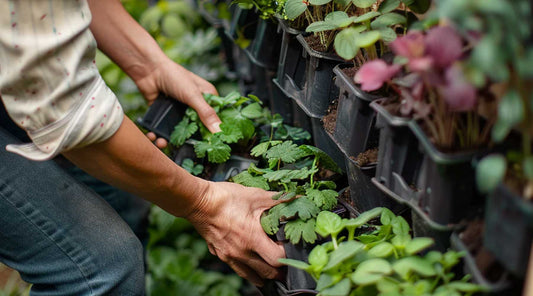How will you use your extra time each day now that you’ve lost an hour of sleep and gained an hour of daylight in the evenings? We’ve got your answer: it’s time to grow tomatoes in your patio garden! You don’t have to have a large space or even a raised bed to grow tomatoes right outside your door. With a bit of planning and some medium to large pots you can enjoy everything from Caprese salad to homemade ketchup throughout the summer months and into the fall.
Follow these six easy steps and you’ll have tomatoes in no time:
Determine where you will plant
Tomatoes need sunshine to thrive so try to find a space that gets at least 6 hours of sun (and more if possible). Tomato plants love the sun – that is, unless you forget to water them. Pots that are at least a foot wide and a foot deep are a good choice for smaller plants. However, if you have the space, bigger pots will allow you to grow larger varieties for more yield throughout the season.
Select your varieties
One of the great things about growing tomatoes is that the size of the plant doesn’t necessarily determine the size of the fruit. This means you can still get large tomatoes from a patio plant or cherry tomatoes from a large vine.
Determinate varieties make the most sense for container gardens, because they will only grow to a certain height and then stop. Some of these varieties don’t even need a cage. Most of the “bush” and shorter varieties like Red Rocket and New Big Dwarf can get by with just a few stakes for support and will produce a nice amount of fruit in about 60 days.
If you have larger pots and room for plants that can grow over 5 feet tall, indeterminate tomato plants could be a great choice. They have a longer growing season, so you will always have fresh tomatoes within reach.
Planting
Tomatoes need plenty of water, which also means they need good drainage. High quality potting soil is always recommended and generally retains water well. Adding fertilizer is also a good idea before planting. Additional amendments can include crushed eggshells, bone meal, fish meal, and aspirin tablets. Be sure to continue feeding with a quality fertilizer every two weeks until the plants start growing. Then increase fertilizing to weekly.
For a stronger plant, strip off the lowest sets of leaves and bury the bottom 2/3 of the stem below the soil. This allows the plant to sprout roots along the stem for better water uptake. If your pots are big enough, planting chives, basil, parsley, and garlic will help to repel pests naturally and can improve your yield.

Watering
After planting, thoroughly soak the plant by watering until the water runs freely out of the bottom of the pot. Make sure the soil is fully saturated. Tomatoes need a lot of water, especially in warmer weather, so setting a consistent watering schedule is a good idea. Otherwise, check to see if the top inch or two is moist and water when needed.
Pruning
Pruning will ensure the plant directs energy to growing fruit, rather than leaves and branches. This means most lower branches can be cut away once your plant starts to grow. New stems growing out of old ones can be removed, along with any stems that don’t have flowers or fruit. Dead and discolored leaves should also be removed. If the tomato plant gets too tall, you may want to cut it down from the top to control the size of the plant. Unless a branch is too big, you should do most pruning by hand, simply by snapping off the branches. This will cause less damage to the plant than cutting.
Harvest
The best part of homegrown tomatoes is the taste. You can pick them at the perfect ripeness (firm, not soft!) - you might even find yourself eating them off the vine as you walk by. They’re healthier, too, since you can eliminate chemical pesticides and fertilizers. Just make sure you don't leave the fruit on the vine too long, because once they are ready they need to be picked frequently to keep them from spoiling and to encourage new growth.
Heirloom or cherry, Early Girl or Big Boy, make this the year you finally plant some tomatoes and enjoy your patio garden. You can even find varieties specifically for hanging baskets and load up your Yard Tree Hanging Garden. Need help picking out the right supplies? Give us a call!






